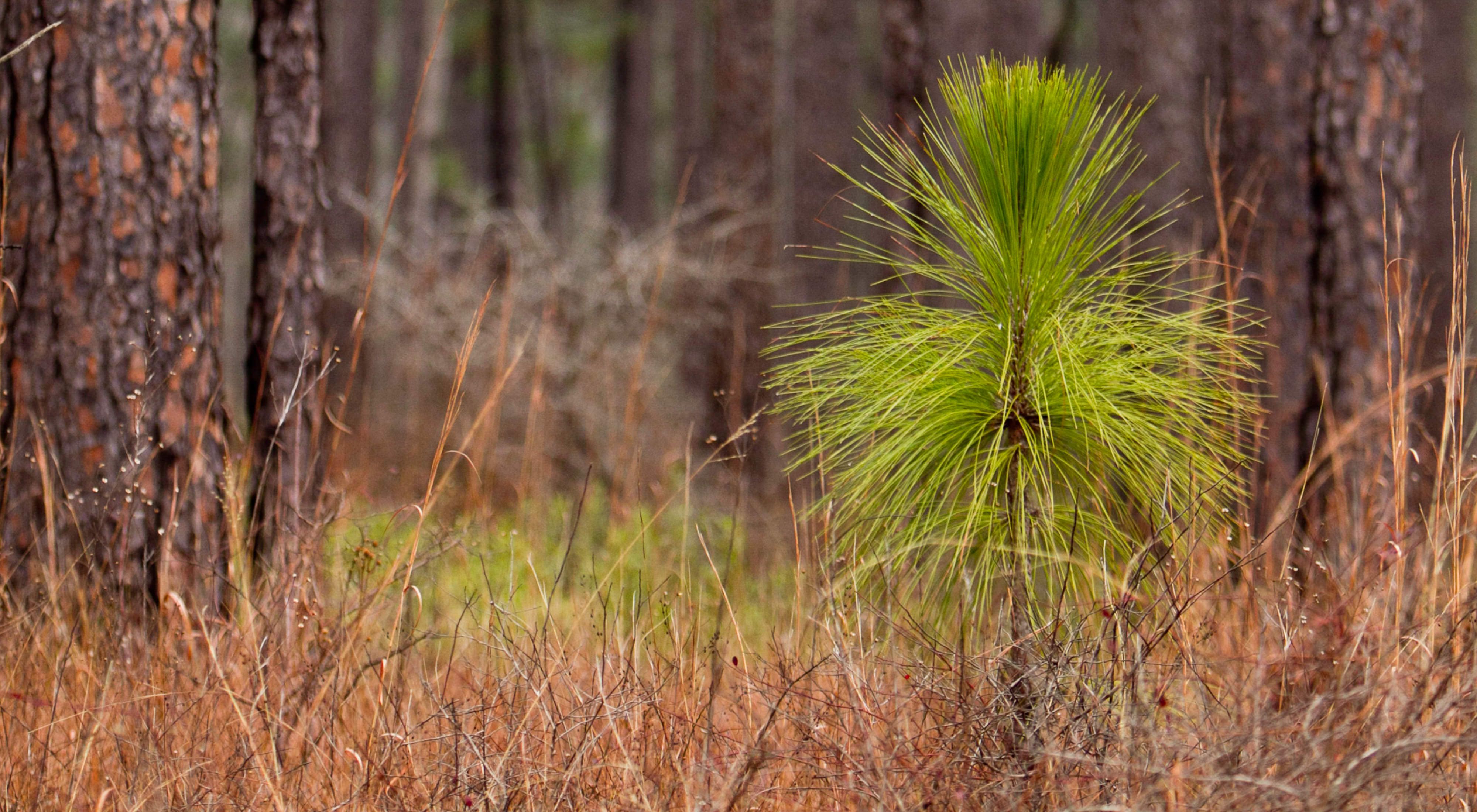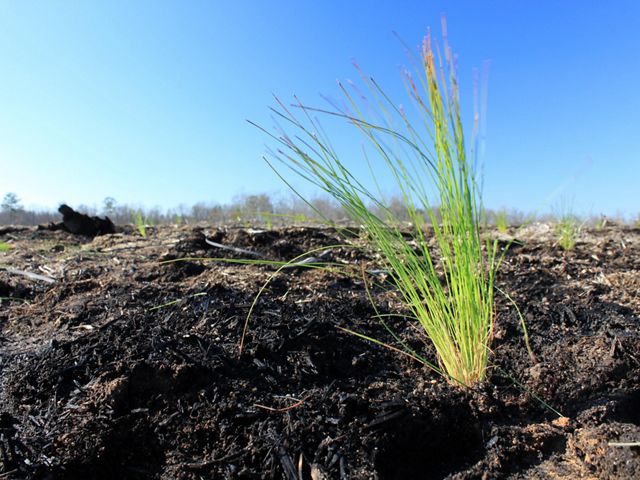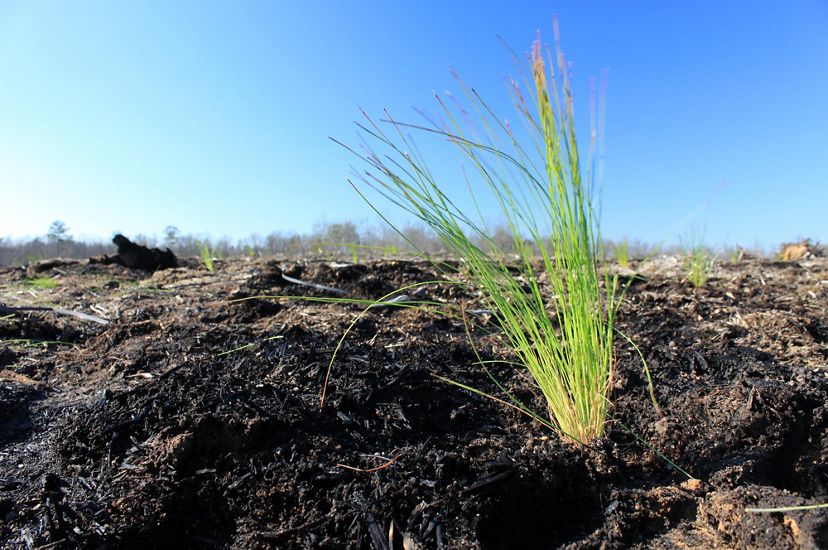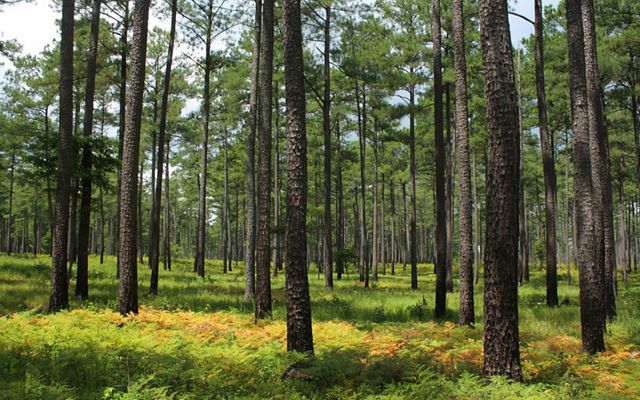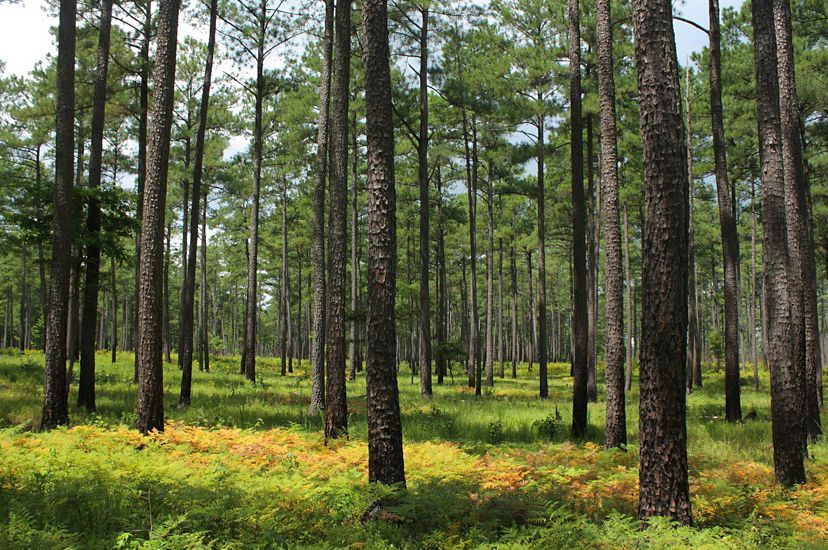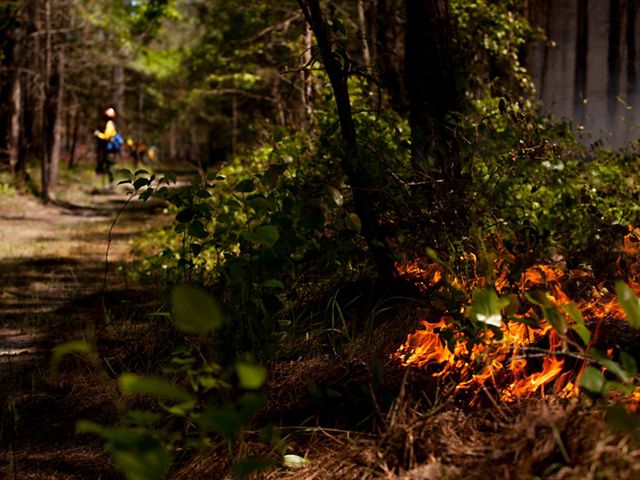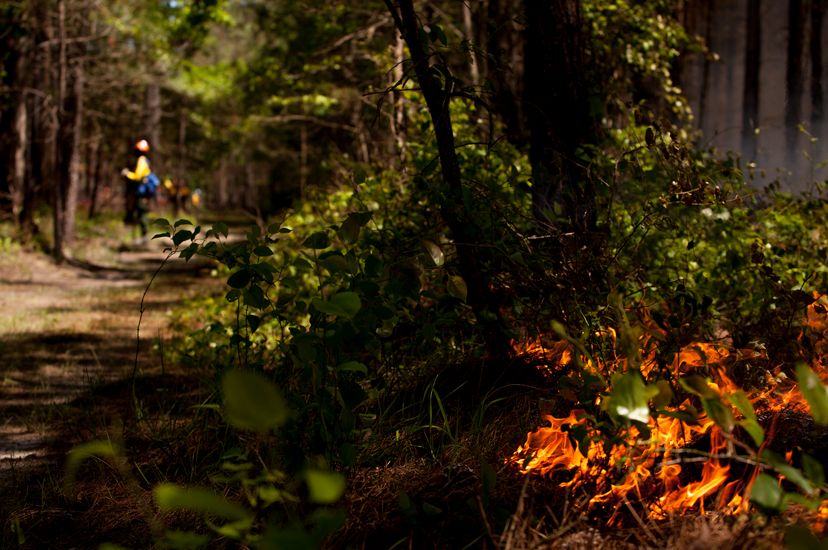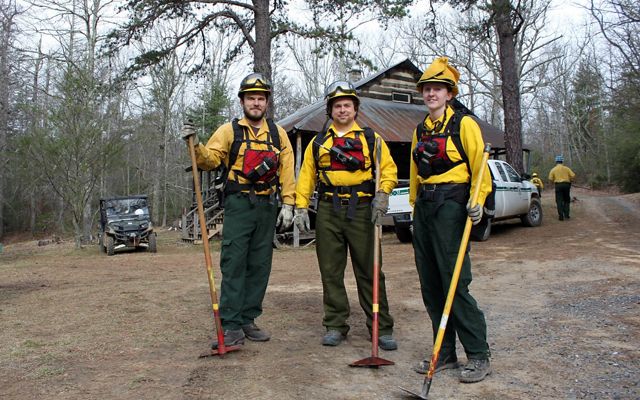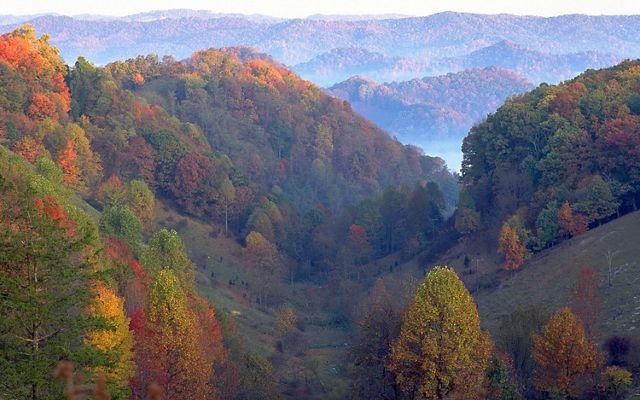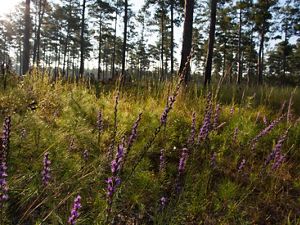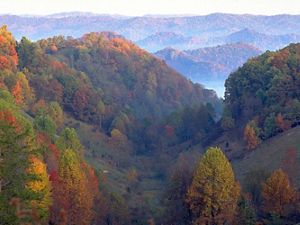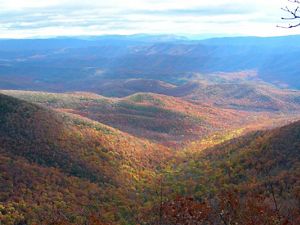How We Work: Forests
We're working to ensure that Virginia’s forests continue to harbor wildlife, support recreation and clean the air we breathe and the water we drink.
Longleaf Pine: Virginia's Founding Forest
In Virginia, more than 1 million acres of longleaf forest extended south from the James River when English settlers arrived in 1607. The trees were the backbone of America’s naval stores, providing masts, waterproof pitch and turpentine. Their “heart pine” provided the frames and floors for colonial homes and businesses.
This sprawling longleaf forest was harvested to near extinction by 1893. In 2005, a sliver of just 200 native trees remained in Virginia.
But a new era of restoration is turning the tide.
AN ERA OF RESTORATION
The Nature Conservancy purchased a 2,700-acre tract of pineland in Sussex County, Virginia from the Hancock Timber Resource Group in 1998 to create Piney Grove Preserve.
Our mission was to restore the property to a pine savanna, showcasing the remarkable biological diversity of southeastern Virginia’s longleaf forests. Since our first purchase, we’ve expanded the preserve and adjacent public lands to more than 10,000 acres in partnership with the commonwealth.
Controlled Burns: Firing up a Fix
Controlled burning remains one of our most effective tools for restoring forests. Fire clears forest undergrowth and breaks up the canopy, encouraging longleaf seeds to germinate. >For this habitat fire is a tonic.
By enabling pines to thrive and encouraging native grasses and wildflowers on the forest floor, fire creates the only environment in which Virginia's rarest bird, the red-cockaded woodpecker, can flourish. In short, fire is a critical element to restoring the rich natural diversity of our Virginia Pinelands
At Piney Grove Preserve, on state lands such as Big Woods and South Quay and on private holdings, TNC and our partners are restoring thousands of acres of resilient, fire-adapted longleaf pines. These rich habitats will be a key component of Virginia’s healthy future forests.
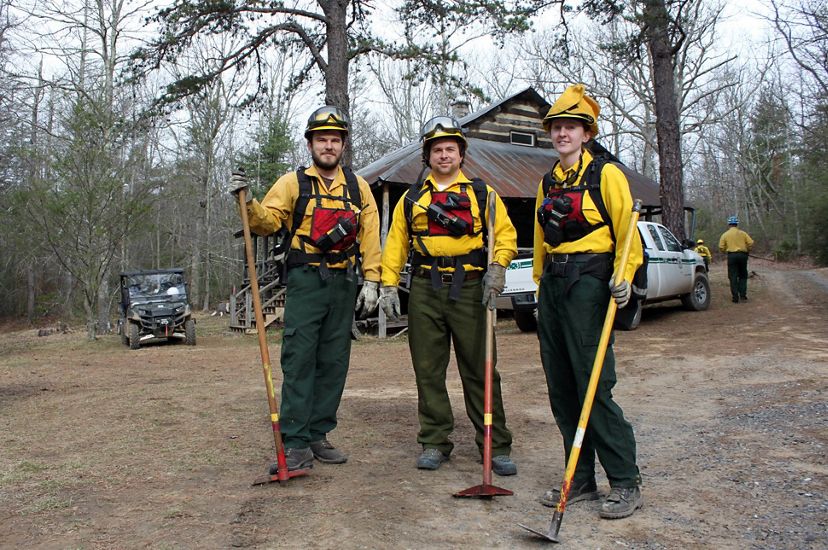
Drones and Dragon Eggs
Ideal weather, strong partnerships and new technology contribute to a record burn season.
Learn MoreThe Power of Partnership: Learning and Burning
To rejuvenate pine-oak forests in western Virginia, TNC and partners in the Central Appalachians Fire Learning Network have reintroduced fire across thousands of acres on our Warm Springs Mountain Preserve, adjacent George Washington and Jefferson National Forests and state lands.
Years of measuring post-burn effects have helped inform how we light future fires and affirmed a host of positive responses for forest health and diversity, especially from repeat burning.
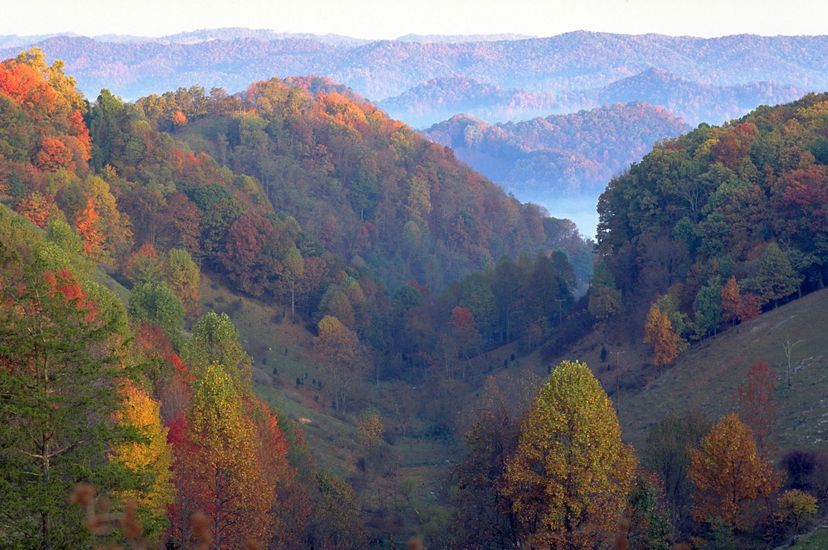
Capturing Carbon
Every part of a living tree stores carbon, and forests absorb more atmospheric carbon when they are healthy and growing.
Through our Conservation Forestry Program in southwestern Virginia, we’re working to change the short-term thinking that has plagued Appalachian forest management for at least a century. Rather than viewing their timber as a piggy bank to be broken in an emergency, landowners have banked 22,000 acres of private forestland with our program, earning annual dividends and helping protect clean water.
As these forests grow, they absorb carbon dioxide like a giant sponge—a service that, under California’s cap-and-trade program, allows polluters to offset their emissions by paying into forestry projects. In 2014 our Conservation Forestry Program became the first TNC project in the nation to earn and sell certified forest-carbon credits under the program. In 2018, we successfully verified 158,905 tons of carbon captured, offsetting emissions from almost 18 million gallons of gasoline.
With California’s legislature extending the program through 2030, market stability will generate increased revenues, which will enable more on-the-ground forest restoration—a big win for climate, habitat and water quality.
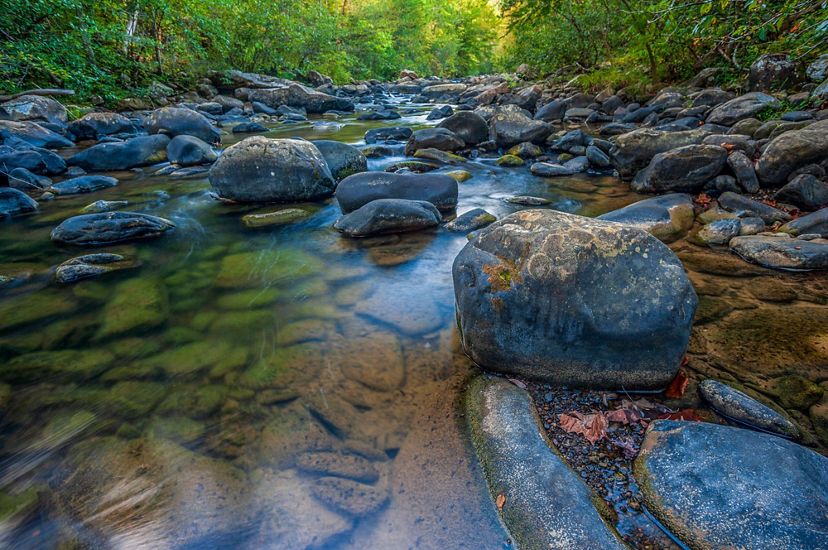
Cumberland Forest: A Landmark Land Deal
In July 2019, TNC announced the acquisition of 253,000 acres in the Central Appalachians. The Cumberland Forest Project is TNC’s largest-ever conservation effort in the eastern United States, protecting sweeping forest landscapes across two parcels, one in Southwest Virginia and one along the Kentucky and Tennessee border.
The project has its roots in the Clinch Valley, building on the program's successes and lessons learned in community based conservation, sustainable forestry, and carbon markets.
Safeguarding this vast stretch of forest tackles climate change on two fronts: by storing millions of tons of carbon dioxide and by connecting a migratory corridor that scientists believe could be one of North America’s most important “escape routes” as plant and animal species shift their ranges to cooler climates.
In August, 2019 TNC took another historic step with the announcement of the largest open space easement ever recorded in the Commonwealth. The partnership between TNC, the Virginia Department of Forestry (VDOF), and the Virginia Department of Environmental Quality (DEQ) permanently protects 22,856 acres of forest land in Russell County in southwest Virginia.
Stay in Touch
Subscribe to Nature News, our monthly e-newsletter. Get the latest news and updates about our conservation efforts locally and around the world, delivered straight to your inbox.
